On average, email drives an ROI of $36 for every dollar spent. When well optimized, it can give more—a higher ROI than any other channel. Are you in full control of the revenue from emails?
Email marketing provides businesses with a direct line of communication with their customers. You have the power to reach a highly segmented audience with tailored content. Whether through personalized product recommendations, timely promotional offers, or cart abandonment emails, there are many possibilities for maximizing revenue through email marketing.
Every aspect of your email marketing strategy should be optimized for maximum impact. In this article, we will explore best practices based on scandiweb’s email marketing management offer for one of our clients, providing you with actionable insights to enhance your email marketing efforts.
Email marketing best practices
To maximize the effectiveness of your email marketing campaigns, it’s essential to follow best practices that ensure your emails are engaging, relevant, and impactful. If done right, you can create more targeted and effective email campaigns that resonate with your audience and encourage them to take action. We will discuss:
- Segmenting your audience
- Personalization of your messages
- Crafting compelling email copy
- Design and layout of your emails
- The frequency at which you send them
- Ensuring their deliverability
Segmentation
Segmentation is a fundamental practice in email marketing that involves dividing your email list into smaller, more targeted groups based on specific criteria. You then can send more relevant and personalized content to each group, enhancing engagement and conversion rates.
The main benefits of targeted messaging
- Content is relevant to the recipient’s interests and needs, and they are more likely to open your emails, engage with the content, and take the desired action
- Higher open and click-through rates
- Improved overall experience with your brand
- Better conversion rates for making a purchase, signing up for a webinar, downloading a resource, or anything else.
Segmentation can be based on a variety of factors:
- Demographics—age, gender, location, and income level (you might send different promotions to male and female subscribers based on their shopping preferences)
- Purchase history (customers who have previously purchased high-end products might be more interested in premium offerings, while those who buy frequently might appreciate loyalty rewards)
- Behavioral data on interactions with your emails, website, and social media (e.g., you can create segments for those who frequently open your emails but haven’t made a purchase)
- Separating active and inactive subscribers (craft re-engagement campaigns specifically for those who haven’t interacted with your emails in a while).
Personalization
Once you’ve segmented your audience, personalization takes your email marketing strategy a step further by tailoring the content of your emails to the individual preferences and behaviors of your subscribers. With personalization, each email resonates more deeply with its recipient.
Practical techniques for personalizing your email content
- Dynamic content (personalized greetings, product recommendations, and special offers) allows you to create emails that change based on the recipient’s data
- Behavior-triggered emails based on specific customer actions, such as abandoning a cart, browsing certain products, or completing a purchase
- Including the recipient’s name in the subject line or email content or tailoring the message based on their preferences or past interactions
- Location-specific offers and content, e.g., promoting a store event to recipients living nearby or offering weather-related product recommendations.
Email copy and design
Next, the email itself. Let’s be honest: if your email copy and design aren’t well thought-out, the recipient will not bother reading it (or even opening it). Focus on the following elements to capture your audience’s attention and drive them to take action:
The subject line is the first thing recipients see and determines whether they open your email. Keep it concise, intriguing, and relevant. Personalize where possible, and consider using questions, numbers, or urgency to increase open rates.
Once the email is opened, the content must hold the reader’s interest. Use a conversational tone, keep paragraphs short, and ensure the message is clear and direct. Highlight benefits over features and use storytelling to make your content more relatable and engaging.
Every email should have a clear and compelling CTA that guides the recipient toward the desired action. Use actionable language, make the CTA button stand out visually, and ensure it’s easy to click on desktop and mobile devices.
With a significant number of emails being opened on mobile devices, it’s essential to optimize your design for mobile users. Use a responsive design that adjusts to different screen sizes, keep your subject lines short, and ensure that your text and buttons are large enough to read and click easily on small screens.
A clean and organized layout enhances readability and engagement. Use plenty of white space to avoid clutter, incorporate images to break up text, add visual interest, and ensure your design aligns with your brand’s look and feel. Stick to a single-column layout for simplicity and ease of navigation on mobile devices.
For a more detailed guide, read this article: Crafting Winning Email Templates: Your eCommerce Marketing Guide. It covers all the intricate details of email design specifically tailored for eCommerce—from structure and typography to color psychology. We also provide best practices for optimizing email marketing templates to ensure seamless performance across different devices.
Sending frequency
You will also need to determine the optimal sending frequency for your email campaigns to maintain engagement without overwhelming your subscribers. In eCommerce, a common practice is to send three emails per week. This frequency keeps your brand top-of-mind and provides opportunities to promote discounts, special offers, and new products.
While there’s no strong consensus on the best day to send emails, evenings between 8 PM and 11 PM are popular, as they align with when people are more likely to check their emails after daily activities.
Finding the right balance is key. Too few emails can lead to missed opportunities, while too many can cause subscribers to disengage or unsubscribe. Consider A/B testing to determine the optimal frequency for your audience, and continuously monitor engagement metrics to adjust your strategy as needed.
Deliverability
High email deliverability is crucial, even if you aren’t currently experiencing issues. Implementing preventative measures helps maintain a strong sender reputation and ensures your emails land in the primary inbox, even as you scale.
Best practices for email deliverability
- Avoid using generic addresses like noreply@ or info@. Instead, use more specific addresses such as deals@ for promotions or new@ for product updates. Personal senders, like John@yourbrand, can enhance trust and engagement
- Plain-text and light HTML emails often perform better in terms of deliverability. Conduct split tests to determine the impact of plain text, light HTML, and various design elements (e.g., use of %, heavy graphics, many links) on open rates and performance
- Build your sending strategy around email opens to maximize volume and positively impact deliverability.
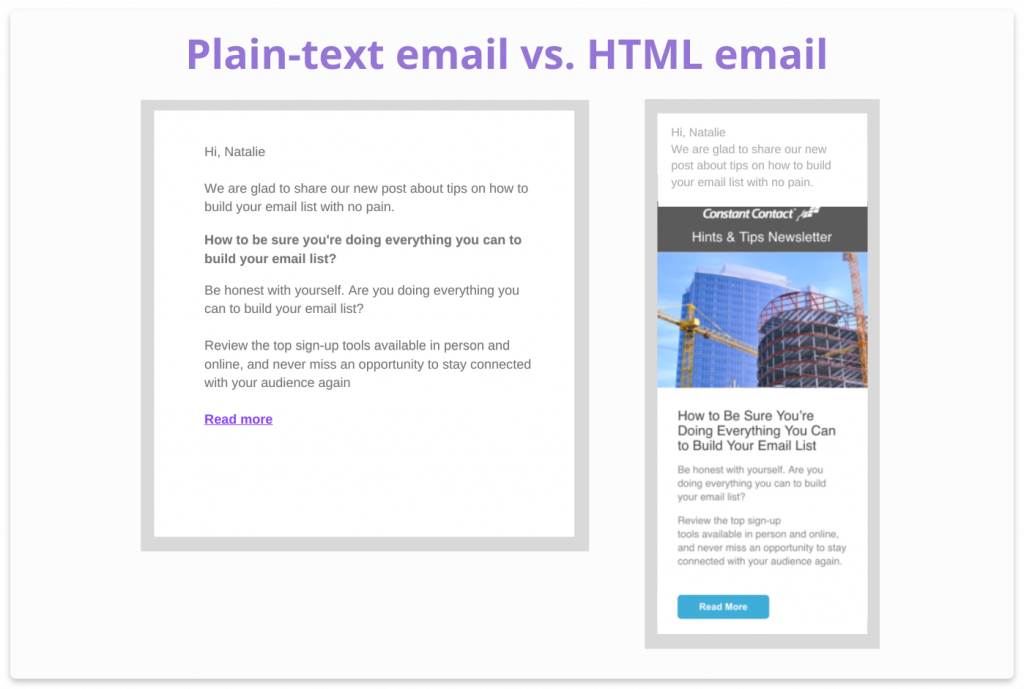
Email content types
Effective email marketing involves the right strategies and automated processes to engage and convert your audience, nurture leads, and drive sales. Here are different email content types:
- Welcome emails to introduce new subscribers to your brand, set expectations, and provide initial value
- Promotional emails to highlight special offers, discounts, and sales events and drive immediate purchases
- Cart abandonment emails to remind customers of items left in their shopping cart, often with incentives to complete the purchase
- Product update emails to inform subscribers about new products, features, or services
- Review gathering emails to request feedback and reviews from customers that build social proof and enhance credibility
- Newsletters to share valuable content, company news, and updates to keep your audience engaged
- Birthday promotion emails to celebrate your customers’ birthdays with personalized offers or discounts, making them feel valued and appreciated
- Re-engagement emails to win back inactive subscribers with special offers or by highlighting new products and services.
Let’s take a closer look at cart abandonment emails and review gathering emails. They address critical moments in the customer journey—recovering potential lost sales and building trust through customer feedback.
Cart abandonment emails
On average, around 80% of shopping carts are abandoned, and cart abandonment emails help recover these lost sales.
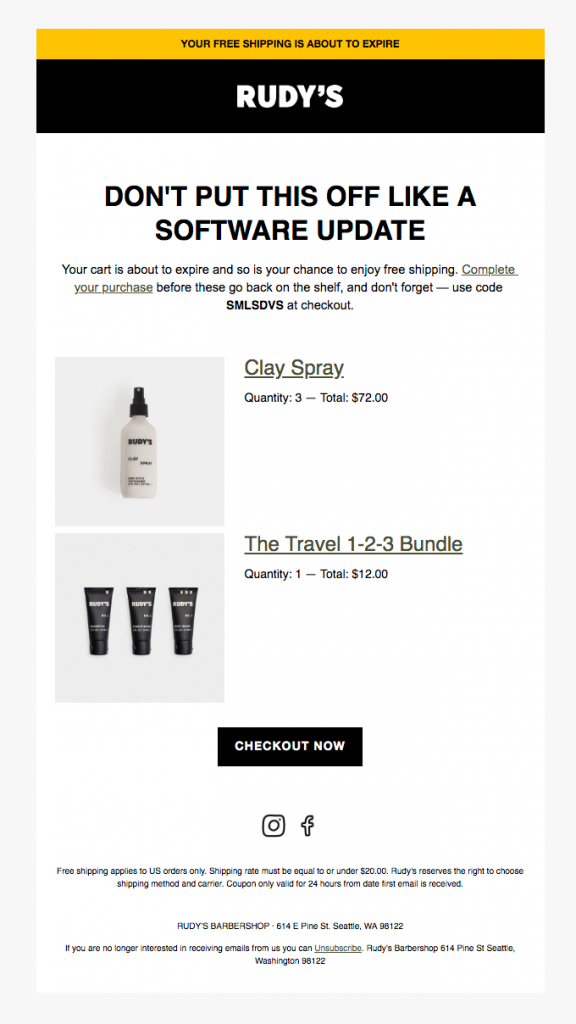
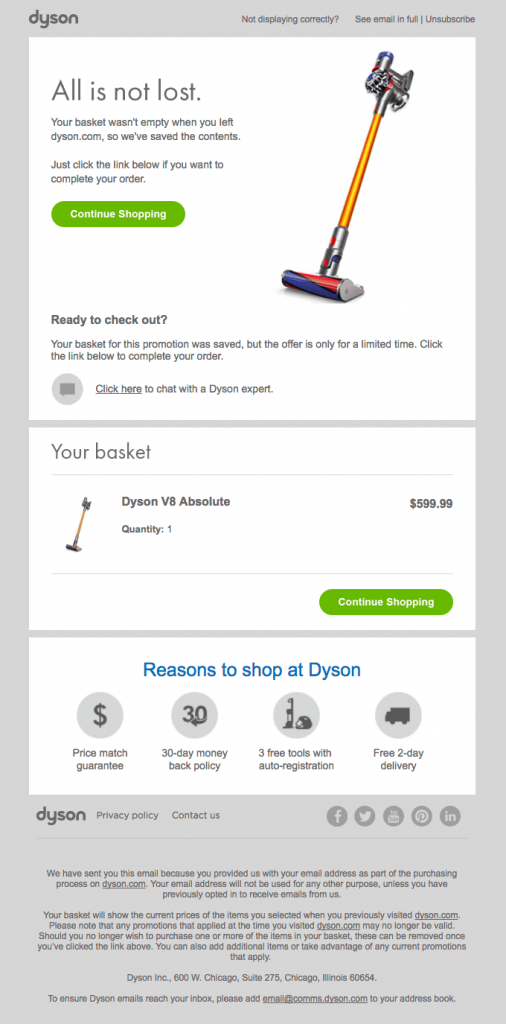
Best practices for cart abandonment emails
- Three-email flow—a series of three emails to maximize recovery rates. For example, you might send the first email after 1 hour, the second after 20 hours, and the third after 3 days. This flow can be combined with an SMS follow-up if the emails remain unopened
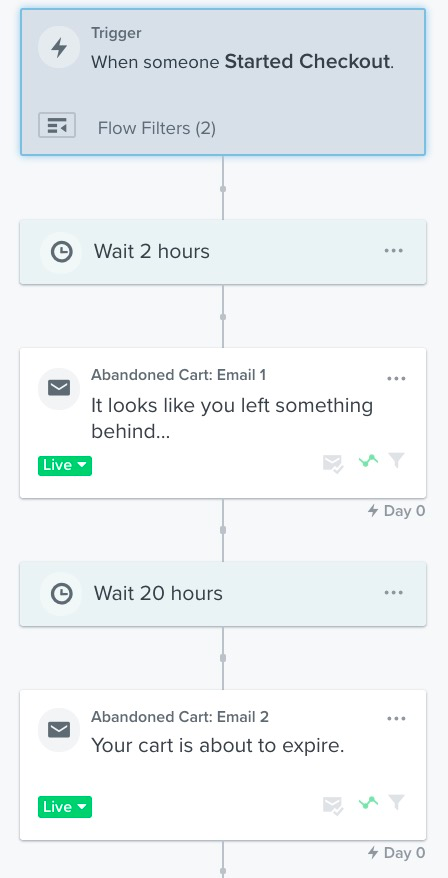
- Test different timings to find the optimal schedule, e.g., compare the effectiveness of sending the first email after 1 hour versus 2 hours and adjust based on what brings more revenue
- Place the main CTA above the fold and ensure it stands out using a unique color; multiple CTAs can be distracting, so focus on a single, clear action—completing the purchase
- Use a catchy headline, like “Name, did you see anything you like?”
- Offer incentives such as free shipping or discounts to encourage customers to return to their carts. Creating a sense of urgency by mentioning low stock levels can also prompt quicker action
- Remind customers of the items in their cart, emphasizing key features and including high-quality product photos to reignite their interest; add the products that the customer was looking at
- Using plain text or light HTML emails can improve deliverability—test different formats to see which performs best
- Include product reviews and relevant product suggestions to enhance credibility and appeal; add best-selling products
- Personal touches, such as addressing the customer by name, can also increase engagement
- Encourage account creation during the user experience flow to make tracking and recovering abandoned carts easier.
Review gathering emails
Gathering reviews can have a huge impact, especially when optimized through A/B testing and automated flows. It has driven substantial additional revenue for many companies. Review-gathering emails can be sent as one-off requests or integrated into your post-purchase flow.
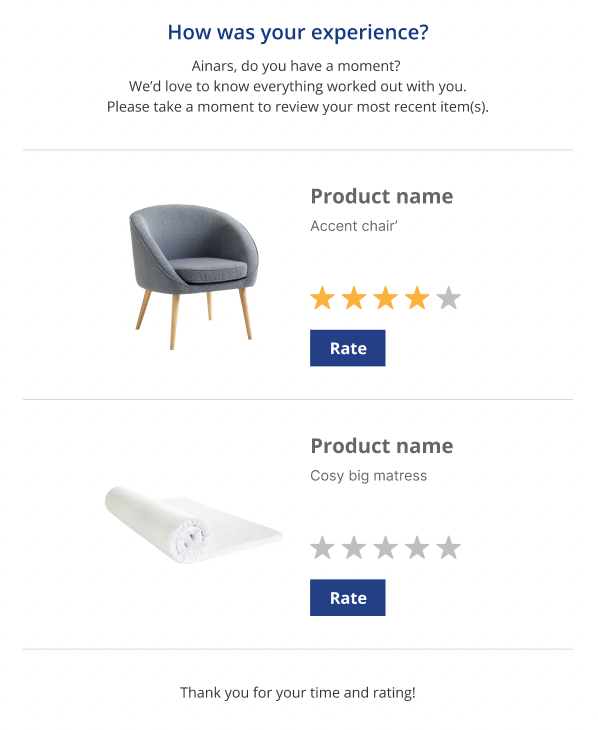
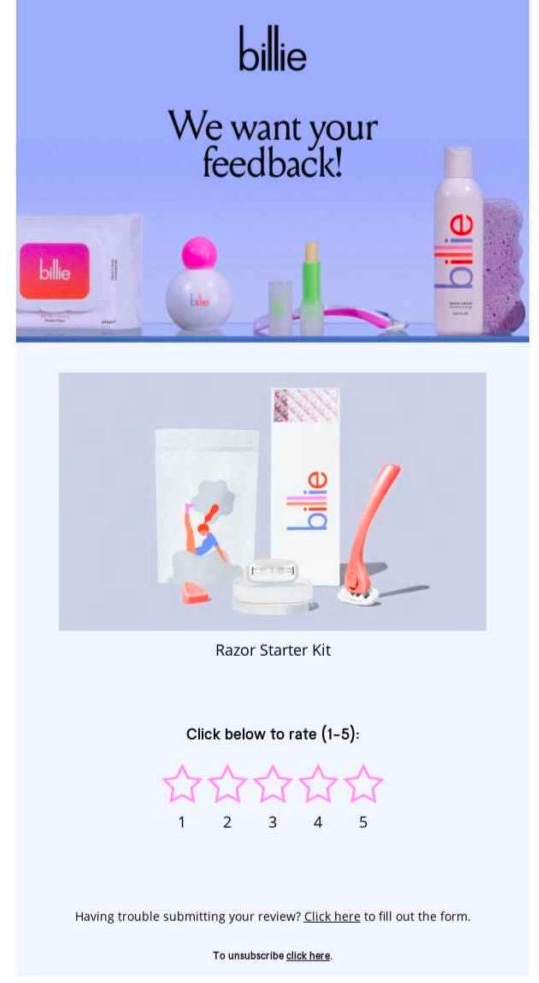
Best practices for review gathering emails
- Providing an incentive, such as a discount or entry into a giveaway, can boost email conversion rates by nearly 20%
- Clearly communicate that the review process is quick and easy, taking only about a minute to reduce hesitation and increase the likelihood of customers leaving a review
- Send the review request shortly after the customer has received their product while the experience is still fresh in their mind.
Automated flows
Perfectly timed and highly personalized email automations, such as welcome series, browse and cart abandonment, post-purchase, loyalty, cross-sell, and upsell emails, have higher open rates. They ensure timely, relevant communication with your customers.
Best practices for main eCommerce automated flows
Welcome series
- Engage new subscribers by offering a sign-up discount or special offer
- Use this opportunity to communicate your brand’s values and unique selling propositions
- Highlight your best-selling items and include time-sensitive discounts

Cart abandonment flow
- Test sending the first email 1 hour after abandonment, followed by additional emails at 20 hours and 3 days
- Use a clear CTA, offer incentives, and remind customers of the benefits of their cart items
- Include product reviews and relevant suggestions to leverage social proof.
Post-purchase flow
- Purchase confirmation email includes order details to reassure customers and is sent right after a purchase is made; you can offer a referral bonus here
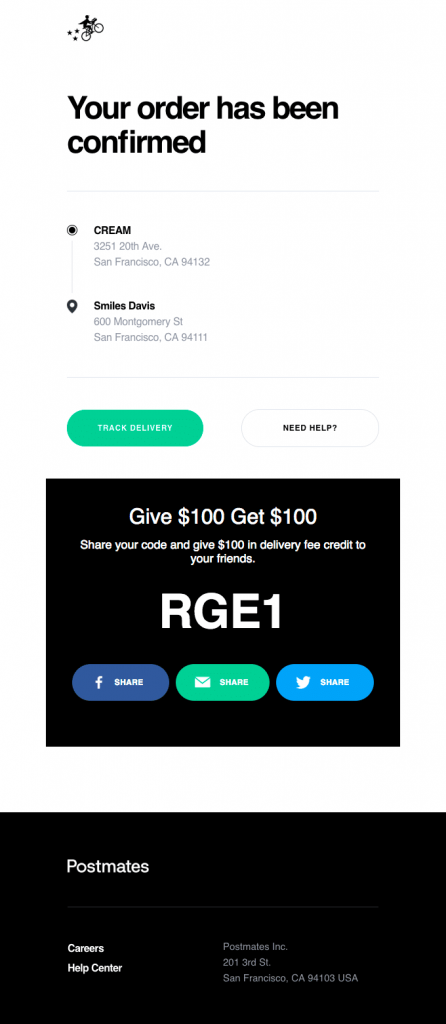
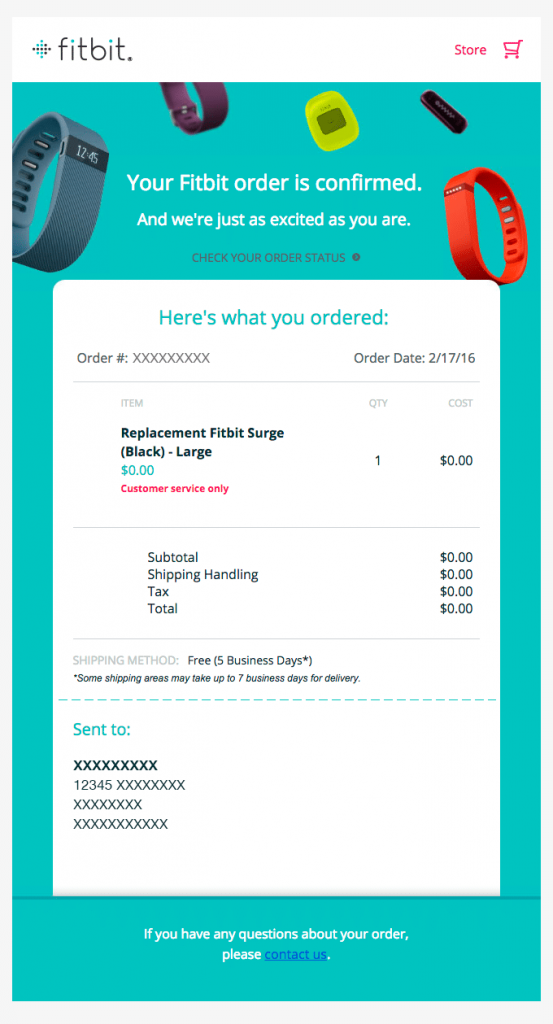
- Order updates email keeps customers informed about their shipment status and if there are any delays; sent right after the purchase is shipped. Don’t send too many updates—one email when the product is shipped and one when it’s delivered; offer detailed tracking options, for example, a tracking link where a customer can follow the order live; promote other products at the end of the email
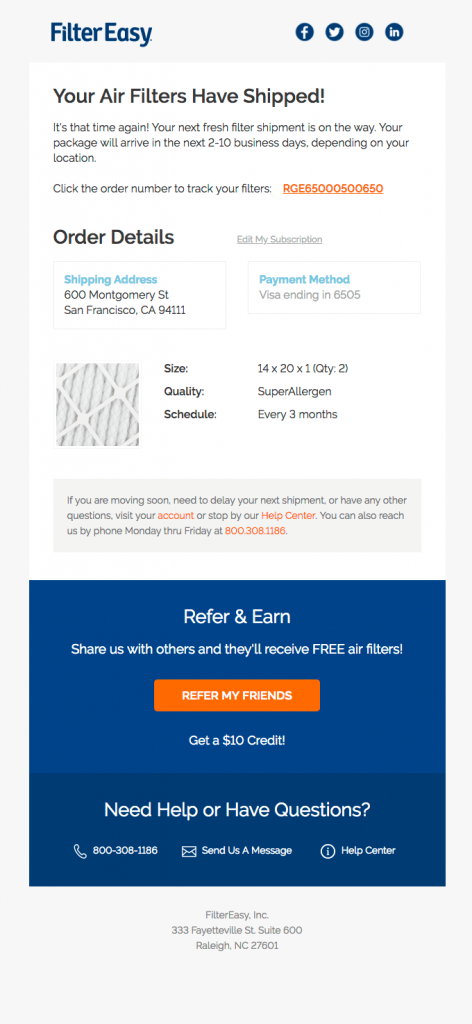
- Product usage tips email helps customers get the most out of their purchase—this email can be beneficial for customers using your product for the first time
- Feedback requests email collects insights and shows appreciation; sent 14 days after a purchase is made with A/B testing subject lines (you can send a reminder about feedback gathering 21 days after a purchase is made)
- Cross-selling and upselling emails suggest additional products that benefit the customer experience; sent after 45 days.
One-off emails
- Order confirmation—confirm delivery times and prices, show upsells and cross-sells, and offer referral bonuses
- Shipping update—share tracking details, avoid excessive updates, and promote additional products
- Exit email for unengaged subscribers—use creative subject lines and approaches to re-engage them or confirm their desire to unsubscribe.
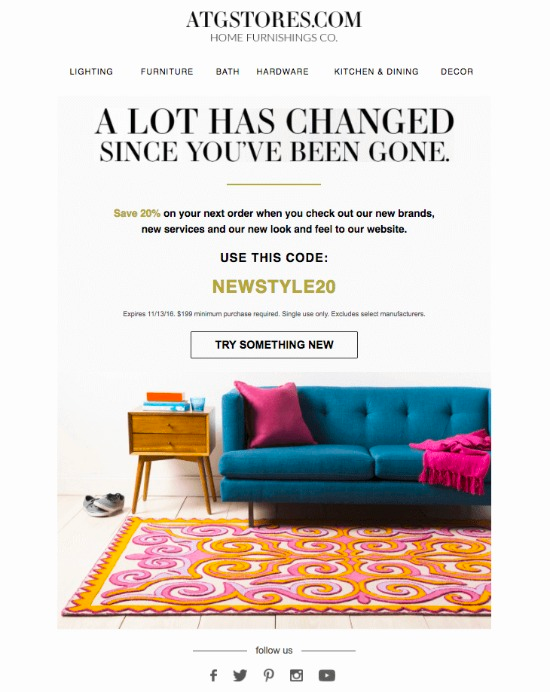
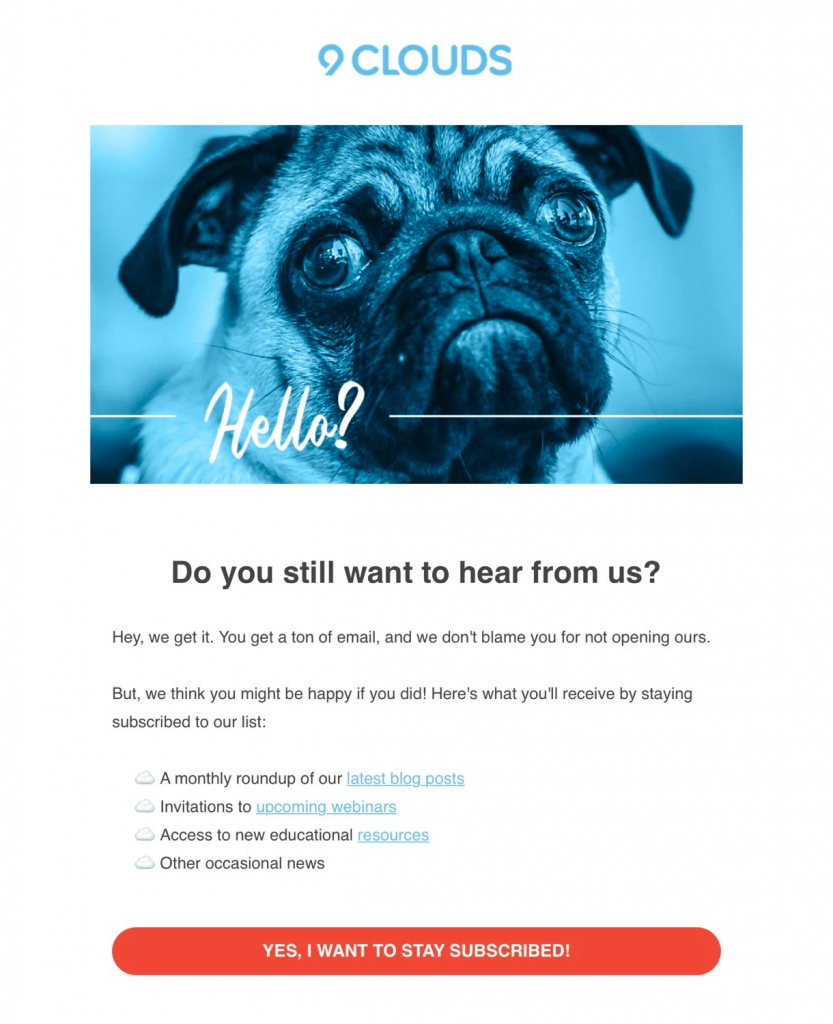
Conclusion
If you leverage segmentation, personalization, compelling email copy and design, appropriate sending frequency, deliverability strategies, and diverse content types with automation, you can enhance customer engagement and maximize your revenue.
scandiweb’s email marketing specialists can conduct a comprehensive email audit, providing a detailed analysis and a prioritized plan addressing the most severe issues and largest opportunities. We will then set up and optimize automated flows and manage campaigns with A/B testing.
Start increasing your revenue this month! Use the contact form below to schedule your email audit and optimize your email marketing strategy.
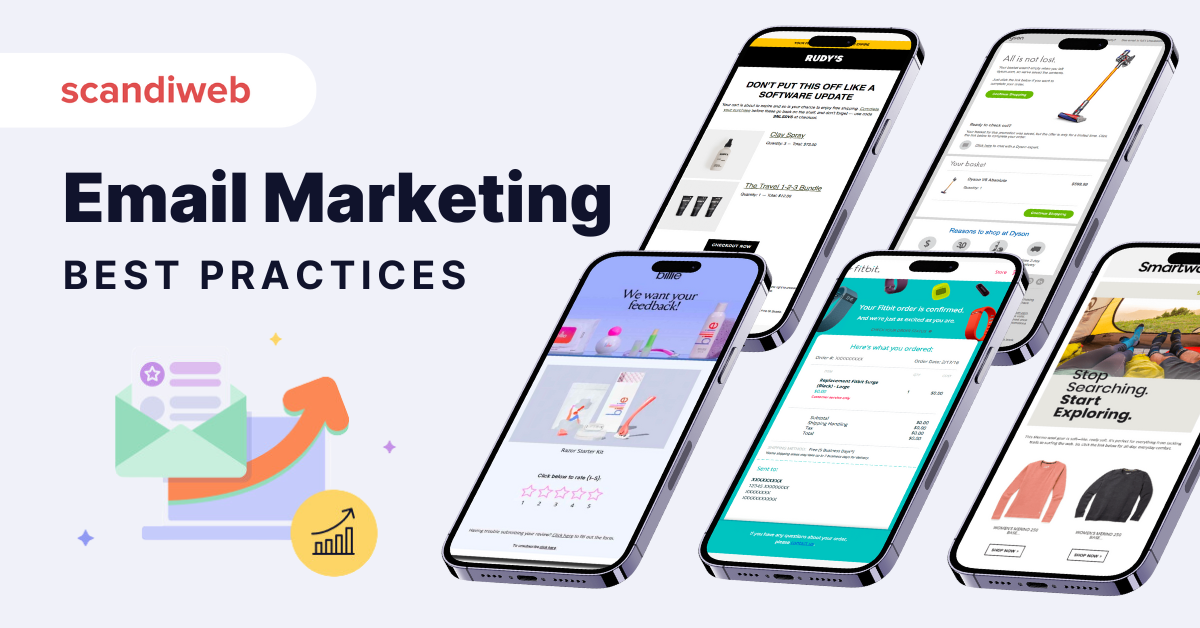

Share on: